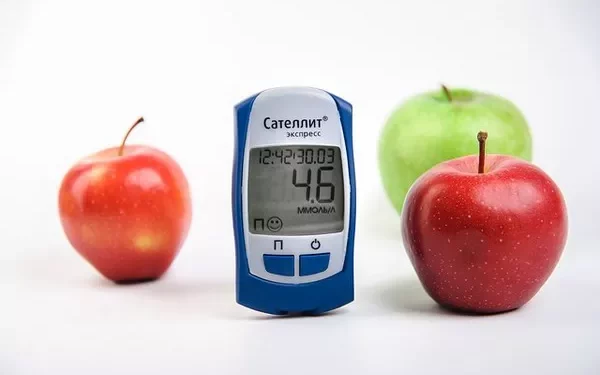Blood sugar levels are crucial for overall health, especially for individuals with diabetes. They provide important insights into how well the body is processing glucose and how effectively insulin is doing its job. Understanding blood sugar levels and using a blood sugar scale to monitor them is essential for maintaining health, managing diabetes, and preventing complications. In this article, we will explore what the blood sugar scale is, how it works, its importance in managing diabetes, and how to use it effectively.
Introduction to Blood Sugar and Its Significance
Blood sugar, also known as blood glucose, is the amount of glucose (a type of sugar) present in the blood. Glucose is the body’s primary source of energy and is derived from the food we eat, particularly carbohydrates. After a meal, carbohydrates are broken down into glucose, which enters the bloodstream and provides energy to cells and organs.
For most individuals, blood sugar levels fluctuate throughout the day depending on meals, physical activity, and other factors. However, for those with diabetes, managing blood sugar levels is vital. Without proper regulation, blood sugar can become too high (hyperglycemia) or too low (hypoglycemia), both of which can lead to serious health complications.
Monitoring blood sugar is particularly important for individuals with diabetes. By keeping track of blood glucose levels, people can make informed decisions about their diet, exercise, and medication, helping them maintain optimal health.
The Blood Sugar Scale: What Is It?
The blood sugar scale refers to the range of blood glucose levels that are considered normal, as well as those that may indicate a potential issue or health condition. These levels are typically measured in milligrams per deciliter (mg/dL) or millimoles per liter (mmol/L), with mg/dL being more common in the United States and mmol/L used in many other countries.
Blood glucose levels can vary throughout the day depending on various factors, including when food is consumed, what food is eaten, and how active a person is. By understanding where their levels fall within the blood sugar scale, individuals can determine whether their levels are within a healthy range or if they need to take action to lower or raise them.
The Blood Sugar Scale: Normal Levels
For a healthy individual, normal blood sugar levels typically fall within a specific range. These values can be further broken down based on different times of the day or specific circumstances, such as fasting or after meals.
Here are the general ranges for normal blood glucose levels:
Fasting Blood Sugar (before eating):
Normal: 70–99 mg/dL (3.9–5.5 mmol/L)
Prediabetes: 100–125 mg/dL (5.6–6.9 mmol/L)
Diabetes: 126 mg/dL (7 mmol/L) or higher
Postprandial Blood Sugar (1-2 hours after eating):
Normal: Less than 140 mg/dL (7.8 mmol/L)
Prediabetes: 140–199 mg/dL (7.8–11.0 mmol/L)
Diabetes: 200 mg/dL (11.1 mmol/L) or higher
Random Blood Sugar (at any time of the day):
Normal: Less than 140 mg/dL (7.8 mmol/L)
Prediabetes: 140–199 mg/dL (7.8–11.0 mmol/L)
Diabetes: 200 mg/dL (11.1 mmol/L) or higher
A1C (average blood sugar over the past 2-3 months):
Normal: Less than 5.7%
Prediabetes: 5.7%–6.4%
Diabetes: 6.5% or higher
These values are general guidelines. It is essential to note that blood glucose targets can vary from person to person, depending on factors such as age, medical history, and overall health.
The Role of the Blood Sugar Scale in Managing Diabetes
For people with diabetes, the blood sugar scale serves as a tool for managing the condition. By regularly monitoring blood glucose levels, individuals can ensure that their blood sugar is within a healthy range. This helps to avoid the long-term complications associated with poorly controlled blood sugar, such as heart disease, kidney damage, and nerve damage.
Here’s how the blood sugar scale plays a crucial role in managing diabetes:
Assessing Medication Effectiveness: The blood sugar scale allows individuals to track the effectiveness of their diabetes medications. If blood sugar levels are consistently high or low, it may indicate that medication needs to be adjusted. For those taking insulin or oral medications, blood sugar monitoring is essential for ensuring that the treatment plan is working.
Guiding Dietary Decisions: The blood sugar scale also helps individuals make informed dietary choices. By monitoring blood glucose before and after meals, individuals can identify which foods cause blood sugar spikes and which ones are easier for the body to process. This allows for better meal planning and the prevention of large glucose fluctuations.
Providing Real-Time Feedback: Monitoring blood sugar regularly provides real-time feedback on how the body is responding to meals, exercise, stress, and medications. This helps individuals make immediate changes if needed to avoid dangerous blood sugar levels.
Preventing Complications: Consistent blood sugar monitoring and keeping blood glucose levels within target ranges can prevent the long-term complications of diabetes. By maintaining a healthy blood sugar range, individuals reduce their risk of developing cardiovascular diseases, kidney failure, neuropathy, and other health issues.
Personalizing Diabetes Management: The blood sugar scale enables healthcare providers and individuals to personalize their diabetes management plan. Through continuous monitoring and data collection, treatment plans can be tailored to individual needs, optimizing outcomes.
How to Use the Blood Sugar Scale
Using the blood sugar scale effectively requires regular testing, understanding how to interpret the results, and making necessary adjustments based on the readings. Here’s a step-by-step guide on how to use the blood sugar scale:
Test Regularly: People with diabetes should test their blood sugar at regular intervals throughout the day. This may include testing in the morning before breakfast (fasting), after meals (postprandial), and before bedtime. The exact frequency of testing will depend on individual needs, the type of diabetes, and treatment plans.
Understand the Readings: After testing, it’s important to understand what the results mean. For example, a fasting blood sugar reading of 130 mg/dL (7.2 mmol/L) would be considered above normal, indicating the need for action. On the other hand, a reading of 95 mg/dL (5.3 mmol/L) would be considered within the normal range.
Track Trends Over Time: Monitoring trends over time is more important than focusing on one isolated reading. For example, if blood sugar is consistently high after meals, it may suggest the need to adjust the diet or medication.
Adjust Lifestyle and Medications: Based on the blood sugar readings, adjustments may need to be made in diet, physical activity, medications, or insulin doses. People with diabetes should work closely with their healthcare providers to fine-tune their treatment plan and ensure their blood sugar remains within target ranges.
Respond to High or Low Blood Sugar: If blood sugar readings fall outside of the normal range, immediate action may be needed. For example, if blood sugar is too high, it may be necessary to take additional insulin or adjust the diet. If blood sugar is too low (hypoglycemia), consuming a fast-acting carbohydrate, like glucose tablets or juice, can help raise the blood sugar to a safe level.
Use Continuous Glucose Monitors (CGMs): Some people with diabetes may use continuous glucose monitoring systems (CGMs), which provide real-time blood sugar data throughout the day and night. CGMs can be a valuable tool for understanding blood sugar trends and responding proactively to changes.
Interpreting the Blood Sugar Scale
The blood sugar scale is a tool that provides information about how well the body is managing glucose. When interpreting blood sugar readings, there are several factors to consider:
Fasting Blood Sugar: A fasting blood sugar reading gives an indication of how well the body manages glucose overnight. If fasting blood sugar is consistently above 130 mg/dL (7.2 mmol/L), it may indicate insufficient insulin production or insulin resistance.
Postprandial Blood Sugar: Post-meal blood sugar levels provide insights into how the body handles glucose from food. A reading consistently above 180 mg/dL (10 mmol/L) after meals may suggest that the body is not processing glucose efficiently.
A1C Levels: The A1C test gives a broader picture of how blood sugar has been managed over the past two to three months. A higher A1C indicates poorer long-term blood sugar control. Individuals with diabetes aim to keep their A1C below 7%.
Random Blood Sugar: Random blood sugar readings can fluctuate throughout the day. If a random reading is consistently above 200 mg/dL (11.1 mmol/L), it may indicate poorly controlled diabetes.
Factors That Affect Blood Sugar Levels
Several factors can affect blood sugar readings, and understanding them is crucial for accurate interpretation of the blood sugar scale. These factors include:
Diet: High-carbohydrate meals cause larger increases in blood glucose, while high-protein or high-fat meals have a lesser effect.
Exercise: Physical activity can lower blood sugar by improving insulin sensitivity.
Medications: Insulin and oral diabetes medications help lower blood sugar, while steroids and other medications may cause blood sugar to rise.
Stress: Stress hormones, such as cortisol, can increase blood sugar.
Illness: Infections or other illnesses can cause blood sugar to rise due to the body’s inflammatory response.
Conclusion
The blood sugar scale is a valuable tool in managing diabetes and ensuring optimal health. By understanding the scale and regularly monitoring blood sugar levels, individuals can make informed decisions about their diet, exercise, and medications. Consistent monitoring helps prevent complications, improves diabetes management, and allows for personalized treatment plans. Working closely with healthcare providers and making adjustments based on blood sugar readings can help individuals with diabetes maintain control over their condition and live healthy lives.
Related topics:
What Is a Normal Fasting Glucose Reading?



























